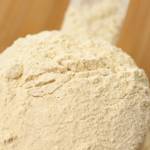Evaluating Nutraceuticals for Horses

Nutraceuticals are dietary supplements that fall somewhere between feeds and drugs. Determining if a product is an unregulated food or is subject to regulation as a drug depends on the manufacturer’s claims that establish intent. In many cases, they claim to treat or prevent disease, which would classify them as a drug, without first undergoing formal drug approval.
Many nutraceuticals are being used as alternatives for both nutrition and medicine. Some of these products make claims without citing proper data to support their safety and efficacy. Because of enforcement discretion, these products continue to be on the market without regulatory oversight. As such, consumers need assurance that a product is safe and potentially able to do what it says it does.
Above anything else, nutraceuticals should be safe. Stock should not be taken in the old adages “if a little is good, a lot is better” or “it can’t hurt.” Nutraceuticals, like many substances, may cause problems for horses due to direct toxic effects, or by delay of more appropriate treatment. Safety of a particular nutraceutical product is often easier to establish than efficacy. Studies that test doses of nutraceutical several fold greater than the intended (recommended) dose help to establish toxicity data. These studies must test animal reaction to the product in both the short and long terms. Finally, a lack of reported toxicity problems with any nutraceutical should not be interpreted as evidence of safety.
Evidence of efficacy is generally provided by studies that document the pharmaceutical, pharmacokinetic, and pharmacodynamic characteristics of a compound. Pharmaceutical data are an evaluation of quality of manufacturing, purity of product, and accuracy of labeling. Pharmacokinetic data consists of tracking the compound through the body of a horse or other animal. It also answers questions about absorption, tissue distribution, metabolism, and excretion. Pharmacodynamic evaluation describes how the animal responds to the compound. This step is the most difficult to define for nutraceuticals because most of these compounds are involved in a cascade of different reactions throughout the body.
There has been a sustained increase in both supply and demand for nutraceuticals, and many products are available that have not been tested for either safety or efficacy. When horse owners are ready to select a nutraceutical, a simple test of a quality product may be to ask for research data (peer-reviewed and published) that support the product.








